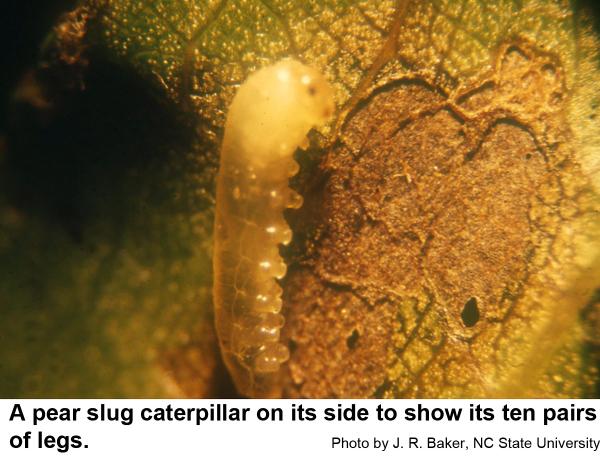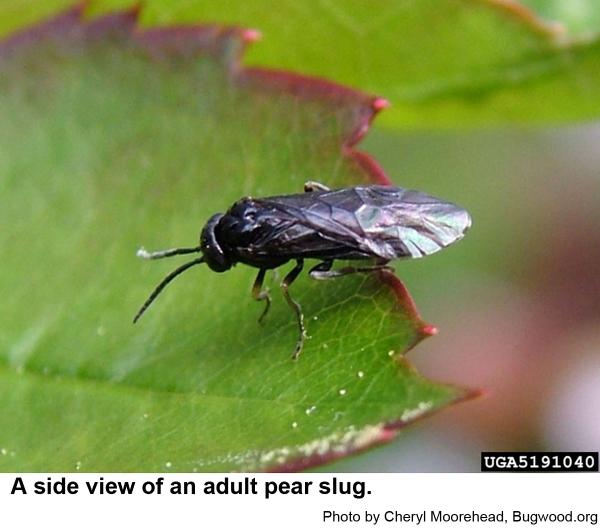Description and Biology
Caliroa nyssae is one of the sawfly slug caterpillars that usually feed as skeletonizers on leaves. It could well be called the blackgum leafslug or the blackgum sawfly because black gum is the only host from which it has been reported. The adult of this caterpillar is an insect that resembles a fly more closely than a moth. Females are almost 3/16 inch long and black with white feet and lower legs. The translucent, smoky-brown wings are held flat over the back. Males are similar, but slightly smaller. Females have a sawlike ovipositor with which they pierce leaves to insert their eggs inside. Caliroa nyssae caterpillars are small, translucent, greenish, slimy caterpillars slightly wider at the head end. Sawfly slug caterpillars overwinter in the soil in a small cavity that is lined with the secretions of the caterpillar. They pupate the following year and the new adults emerge to mate and lay eggs. The caterpillars are sometimes abundant in early July. Caliroa nyssae may have two generations each year in North Carolina as the adults have been collected in August also.
Host Plant
Black gum (tupelo) is the only host listed for this leafslug caterpillar. It can cause large portions of their host trees to brown out and drop leaves prematurely.
Residential Recommendations
An abundance of Caliroa nyssae may cause alarm, Sevin insecticide or any other insecticide labeled for landscape use should give more than adequate control.
Other Resources
- List of the Sawflies (Hymenoptera: Symphyta) of Virginia. Smith, D. R. 2006. Banisteria, Number 28: 3 - 23. Virginia Natural History Society.
- Nearctic sawflies III: Heterarthrinae: Adults and larvae (Hymenoptera: Tenthredinidae). Smith, D. R. 1971. U.S. Department of Agriculture Technical Bulletin No. 1420. 84 pp.
- Extension Plant Pathology Publications and Factsheets
- Horticultural Science Publications
- North Carolina Agricultural Chemicals Manual
For assistance with a specific problem, contact your local N.C. Cooperative Extension Center
The Factsheet has not been peer reviewed.
Publication date: May 23, 2019
Revised: March 25, 2024
Recommendations for the use of agricultural chemicals are included in this publication as a convenience to the reader. The use of brand names and any mention or listing of commercial products or services in this publication does not imply endorsement by NC State University or N.C. A&T State University nor discrimination against similar products or services not mentioned. Individuals who use agricultural chemicals are responsible for ensuring that the intended use complies with current regulations and conforms to the product label. Be sure to obtain current information about usage regulations and examine a current product label before applying any chemical. For assistance, contact your local N.C. Cooperative Extension county center.
N.C. Cooperative Extension prohibits discrimination and harassment regardless of age, color, disability, family and marital status, gender identity, national origin, political beliefs, race, religion, sex (including pregnancy), sexual orientation and veteran status.




